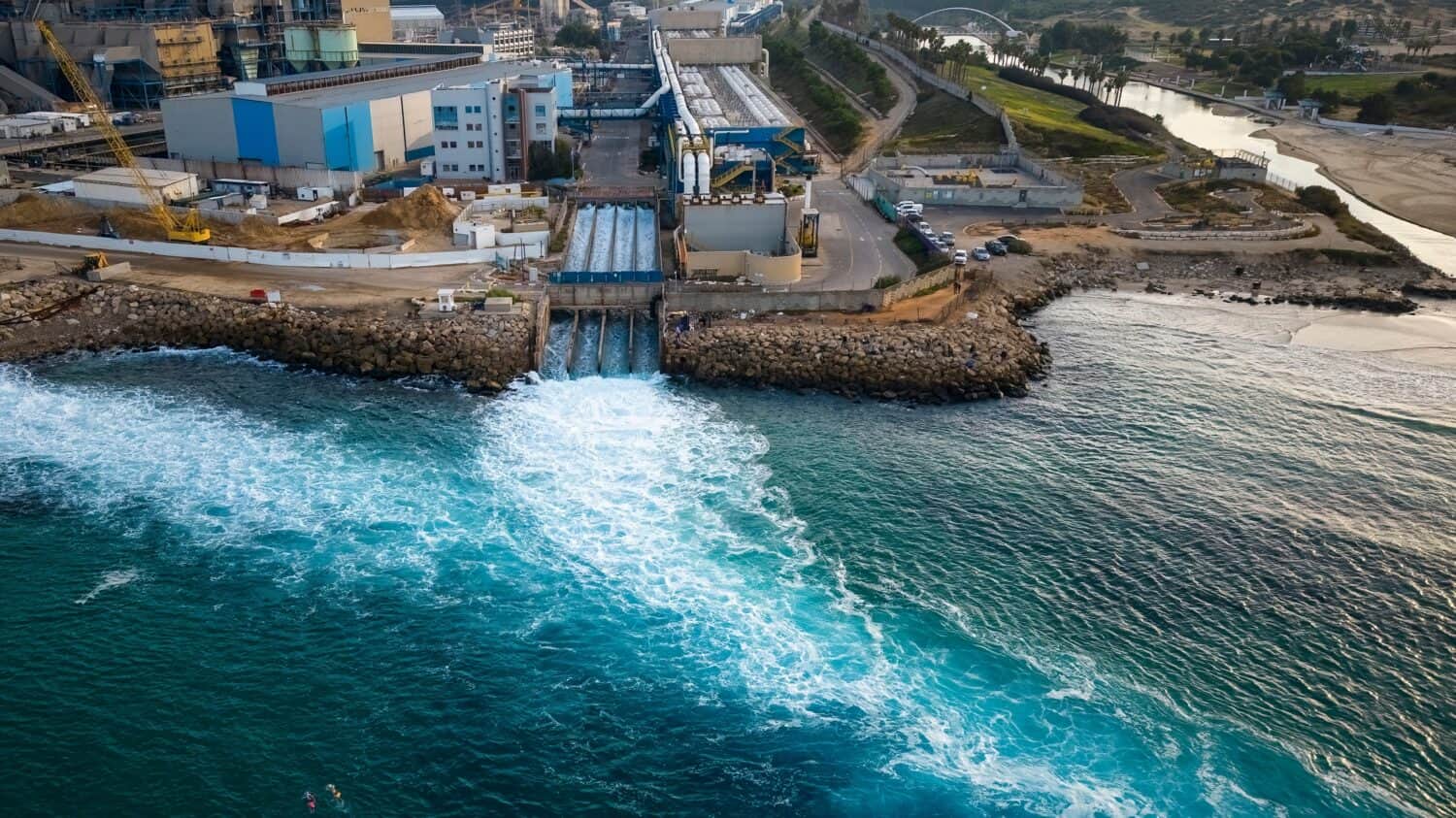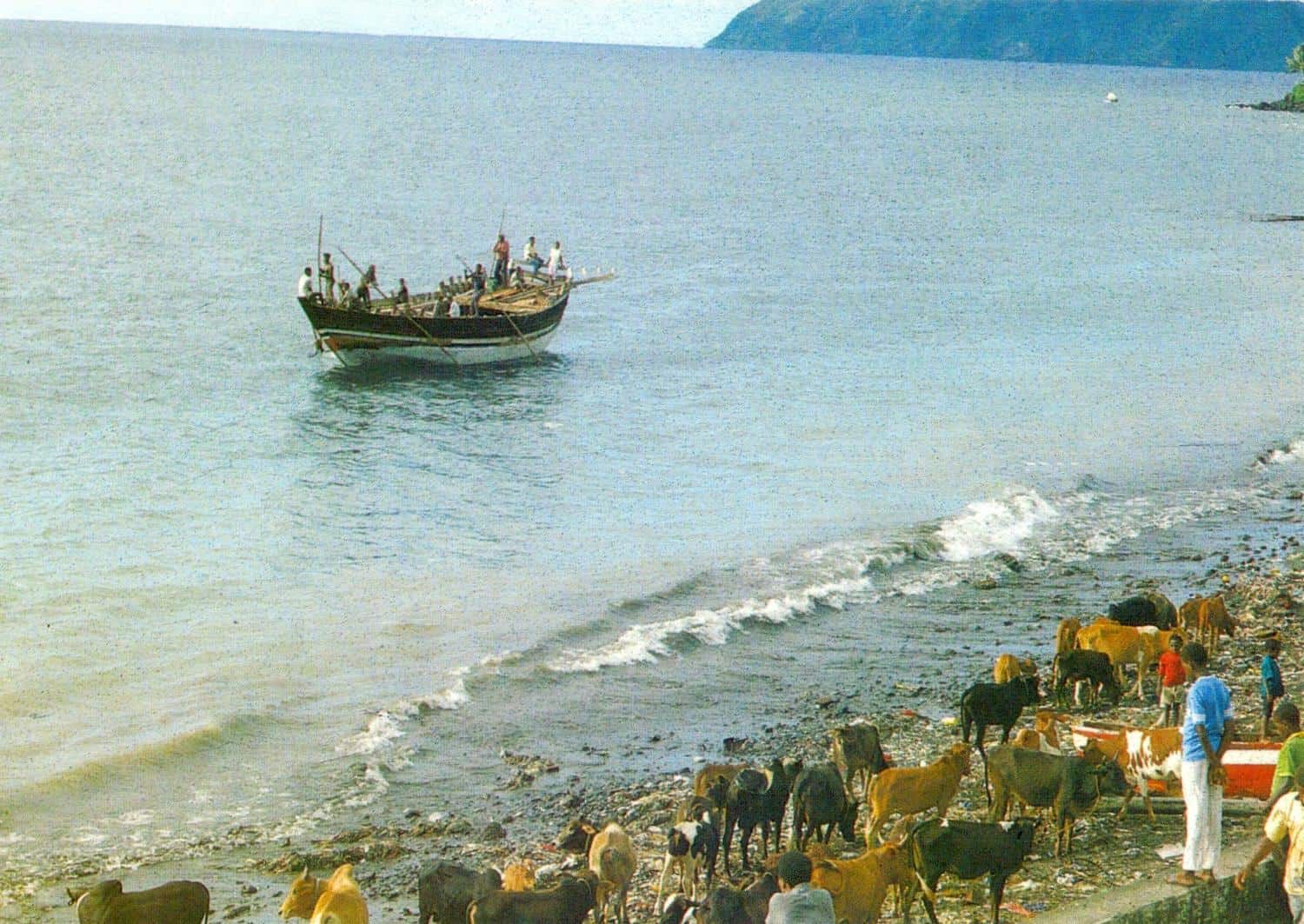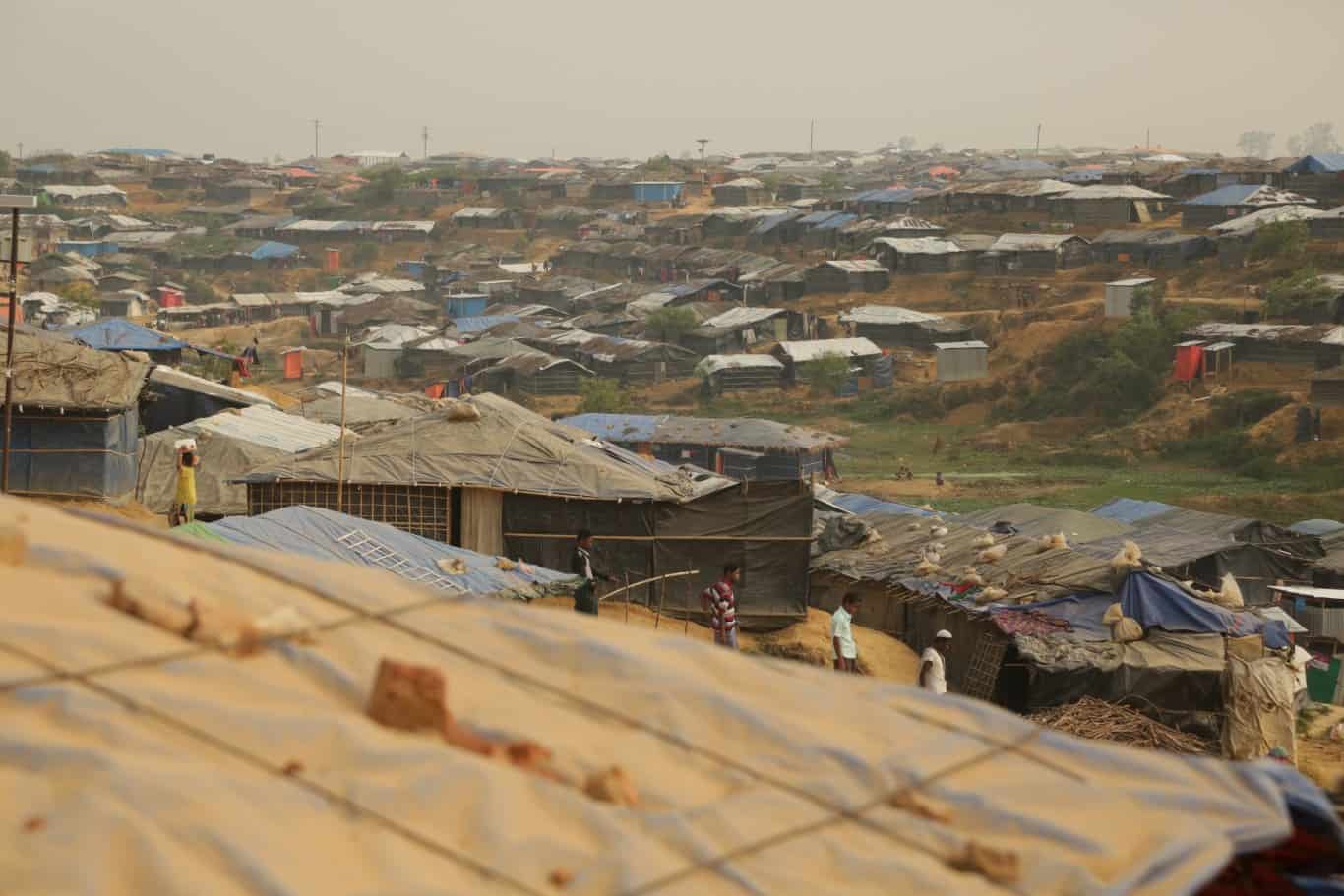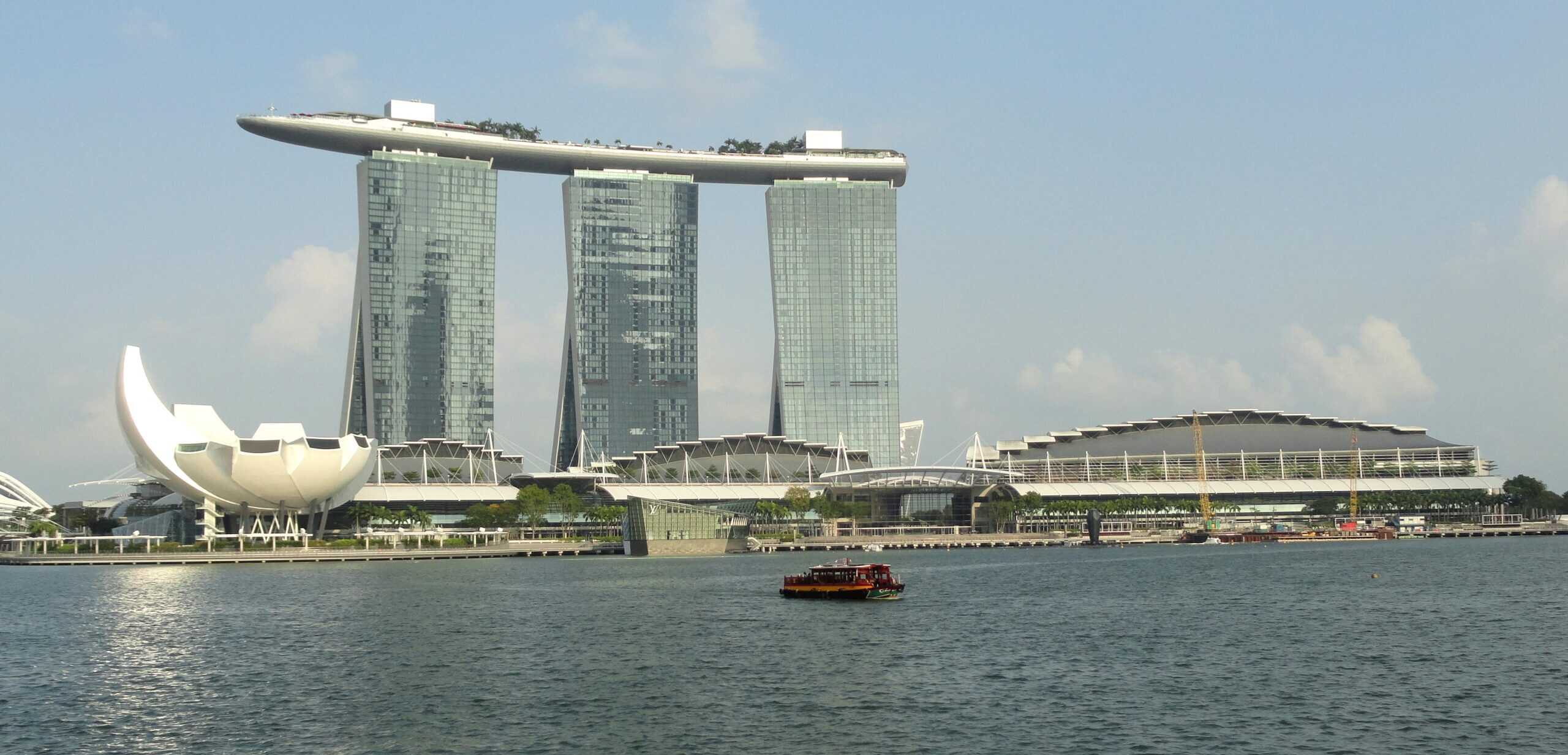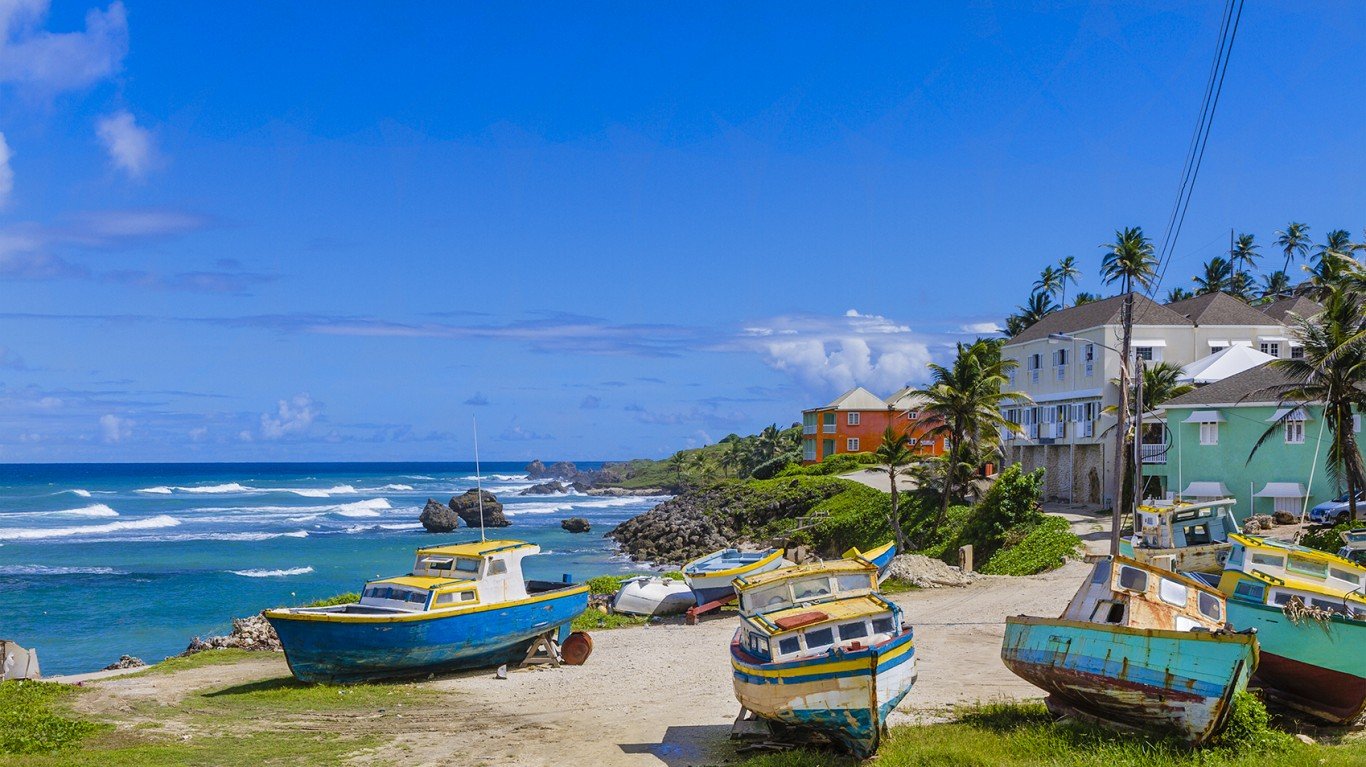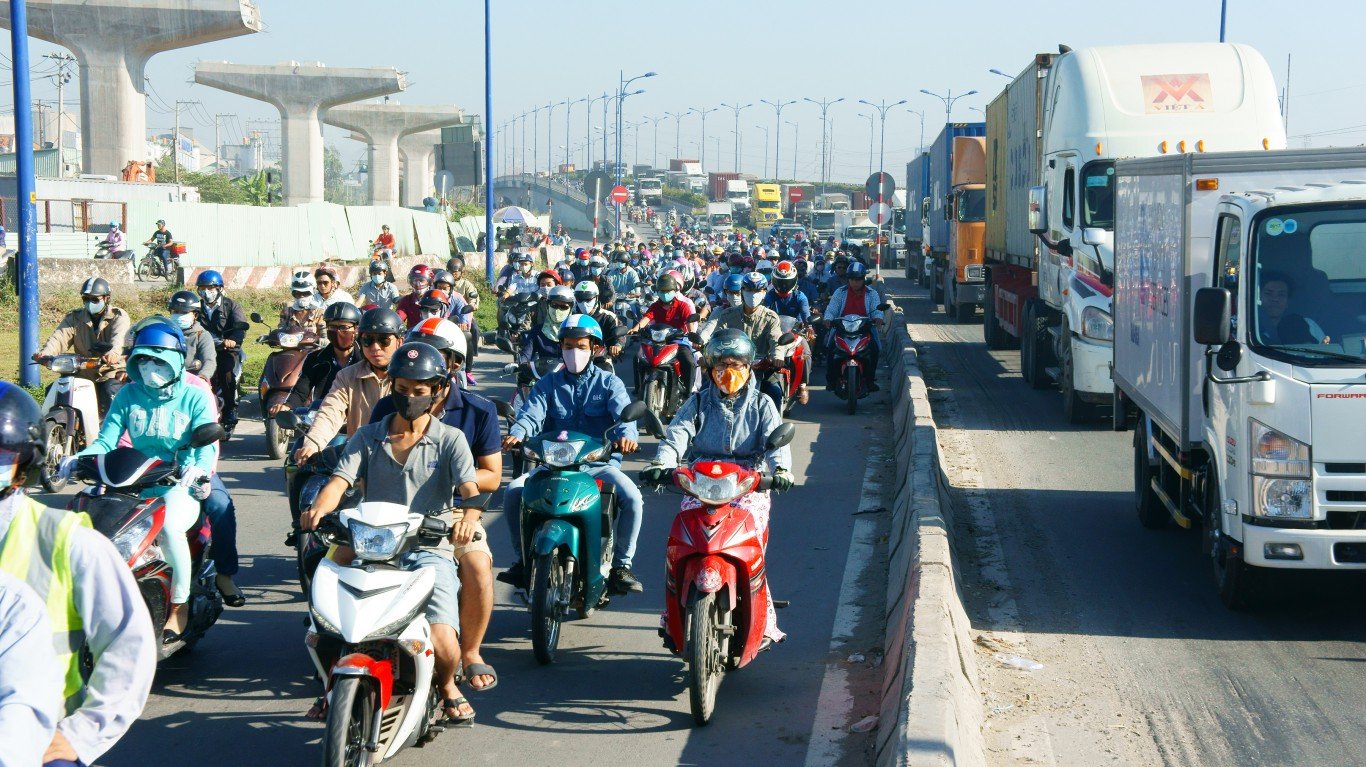

There are an estimated 50.1 million miles of land area globally, and not all of it is inhabitable. While land is an inherently limited resource, demand for it is only growing. The number of people worldwide has more than doubled over the last six decades, from 3.0 billion to nearly 8 billion, according to the World Bank. And based on the current global fertility rate, continued population growth is a virtual certainty in the foreseeable future.
In much of the world, population growth has led to urban sprawl and the rapid expansion of cities. According to the World Bank, only about 34% of the global population lived in an urban area in the early 1960s. Now, nearly 57% do. Over the same period, the number of people per square mile of land area worldwide climbed from 74 to 159.
Of course, the global population is not spread evenly across the world’s 195 countries. And due to variations in geographic area and population size at the country level, some parts of the world are far more densely populated than others.
Using 2022 data from the World Bank, 24/7 Wall St. identified the world’s 30 most densely populated countries. Supplemental data on population distribution, gross domestic product, and total fertility rates — or the average number of children women have in their lifetime — are also from the World Bank and are for the latest available year.
The countries on this list range in population density, from about 773 people per square mile, to over 45,000 per square mile. These countries include some of the most populous in the world — like Bangladesh, India, and Pakistan — but in many cases, high population density is primarily attributable to limited space. Over a dozen countries on this list have a land area of less than 1,000 square miles. For context, the U.S. spans over 3.5 million square miles. (Here is a look at the most populous countries on Earth today.)
In most of these countries — particularly the smallest geographically — large cities are the only way to accommodate the population. In most countries on this list, over half of the population reside in urban areas, and in 13, over 80% do.
Many of these countries are already struggling with overpopulation, with straining infrastructure and growing demand — and in some of them, the problems will get worse before they get better. For a country to maintain its population size — immigration notwithstanding — the average fertility rate should be around 2.1 children per woman, and in 10 countries on this list, fertility rates are well below that threshold. (These are the countries with the highest birth rates.)
Why It Matters

Population density and levels of urbanization can have far reaching implications for ecosystems, infrastructure, and human health. Overpopulation and sprawl can put a strain on natural resources, negatively impact biodiversity, and create infrastructure challenges. Additionally, infectious diseases tend to spread much faster in densely populated areas.
30. Trinidad and Tobago
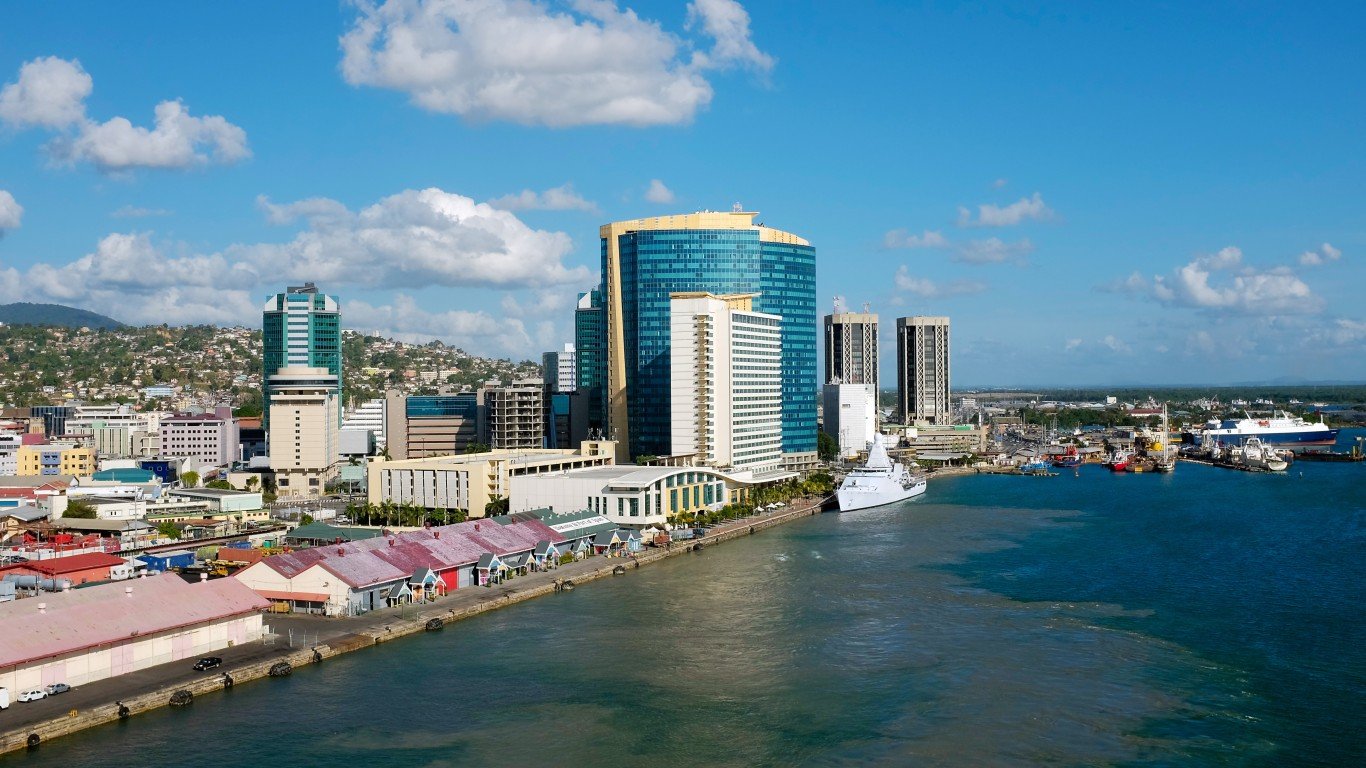
- Population density in 2022: 773 people per sq. mile
- Total population: 1,531,044 (150th most of 195 countries)
- Total land area: 1,981 sq. miles (164th largest of 195 countries)
- Population distribution: 53.3% urban; 46.7% rural
- Gross domestic product in 2022: $30.1 billion ($19,629 per capita)
- Total fertility rate in 2021: Avg. of 1.6 children per woman over lifetime
29. El Salvador
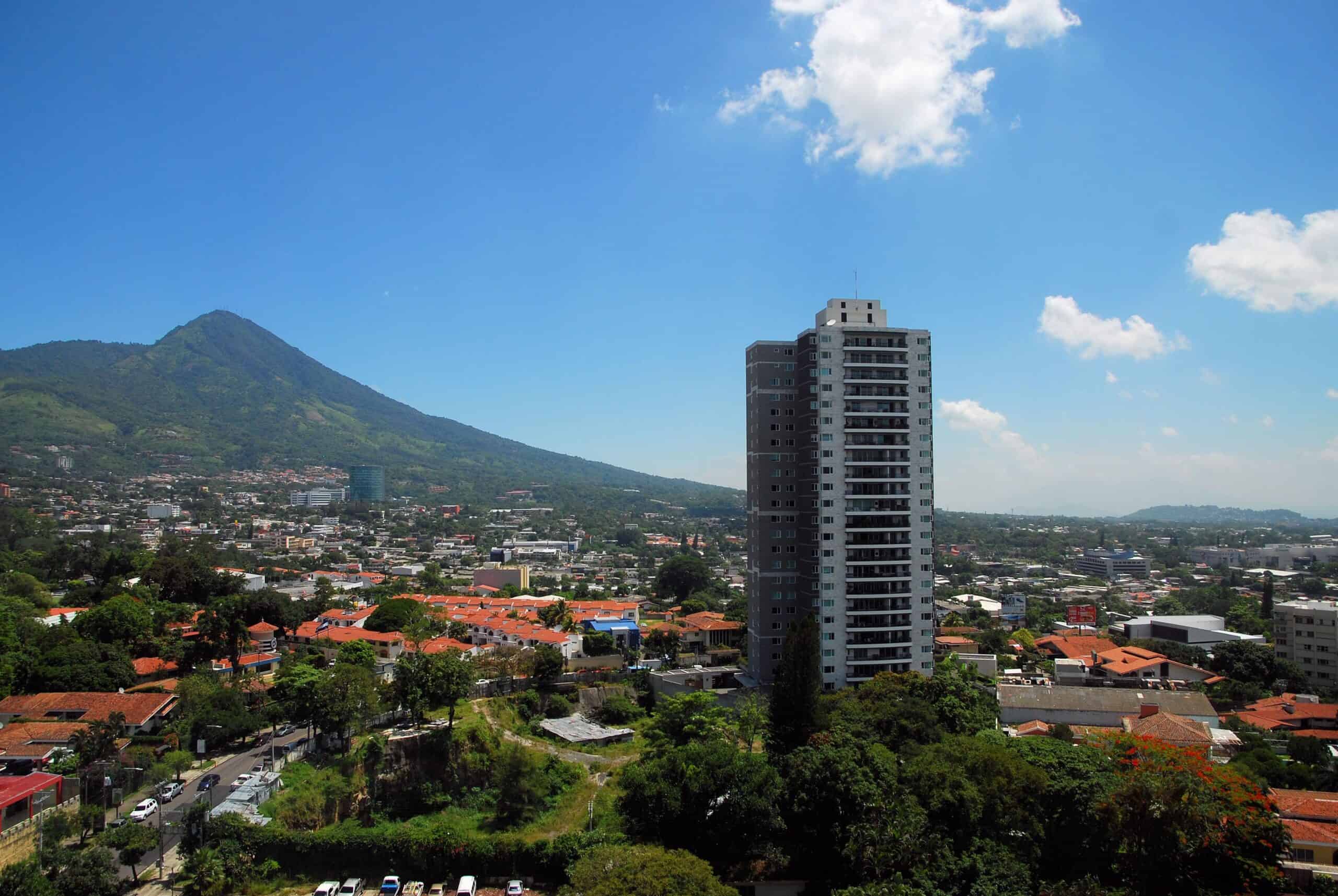
- Population density in 2022: 792 people per sq. mile
- Total population: 6,336,392 (110th most of 195 countries)
- Total land area: 8,000 sq. miles (149th largest of 195 countries)
- Population distribution: 74.8% urban; 25.2% rural
- Gross domestic product in 2022: $32.5 billion ($5,127 per capita)
- Total fertility rate in 2021: Avg. of 1.8 children per woman over lifetime
28. Pakistan
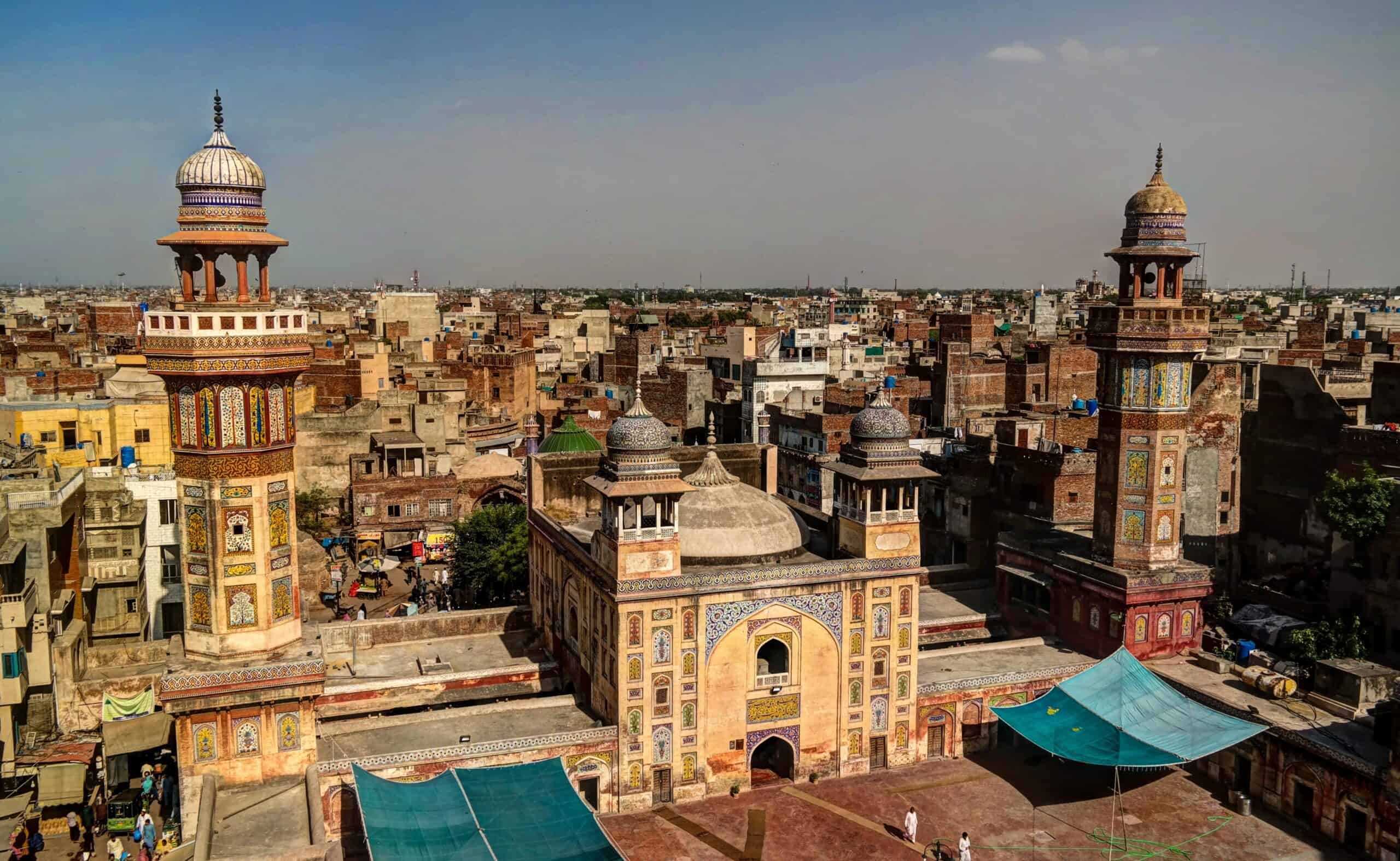
- Population density in 2022: 792 people per sq. mile
- Total population: 235,824,862 (5th most of 195 countries)
- Total land area: 297,638 sq. miles (35th largest of 195 countries)
- Population distribution: 37.7% urban; 62.3% rural
- Gross domestic product in 2022: $374.7 billion ($1,589 per capita)
- Total fertility rate in 2021: Avg. of 3.5 children per woman over lifetime
27. Viet Nam
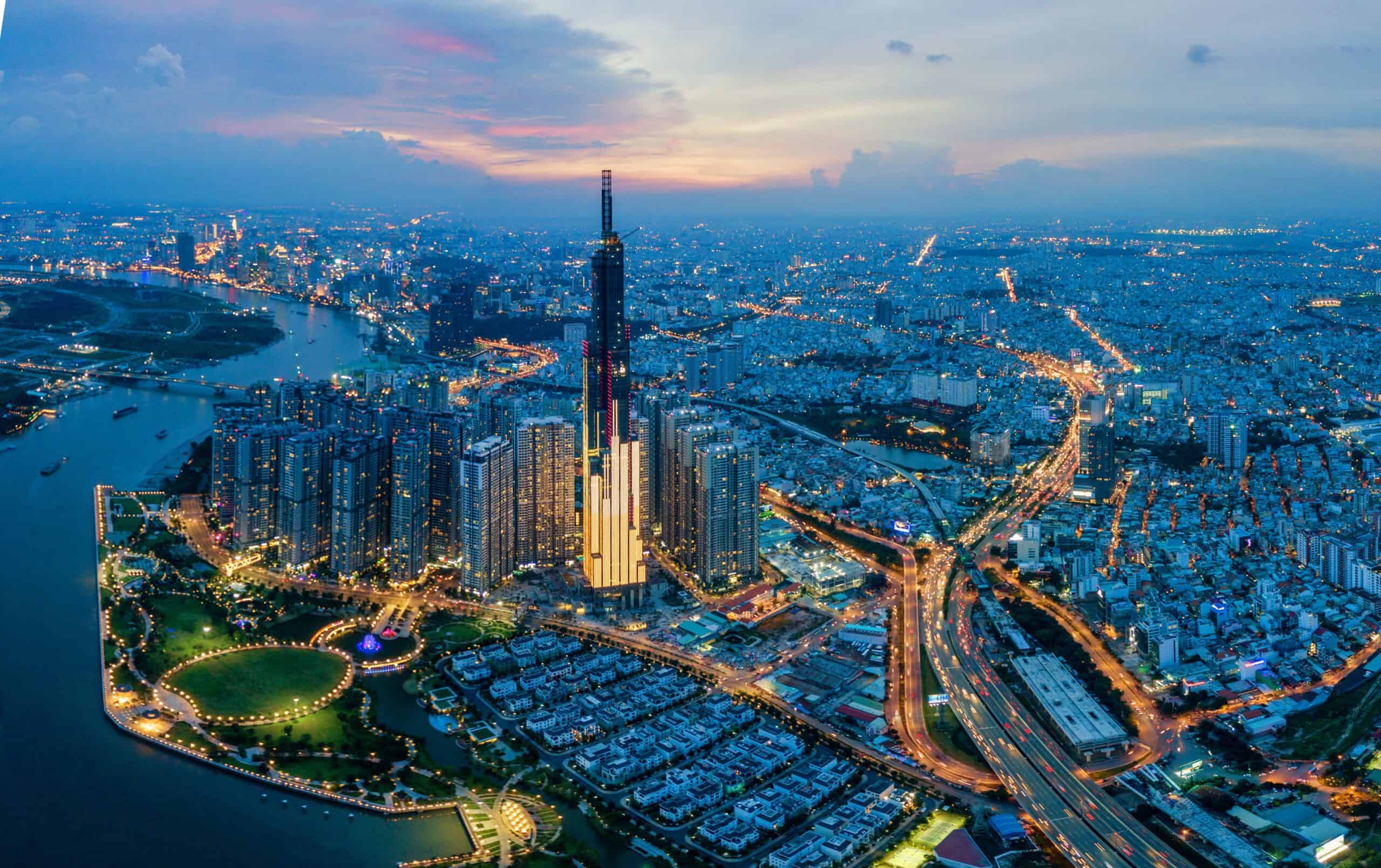
- Population density in 2022: 811 people per sq. mile
- Total population: 98,186,856 (16th most of 195 countries)
- Total land area: 121,016 sq. miles (67th largest of 195 countries)
- Population distribution: 38.8% urban; 61.2% rural
- Gross domestic product in 2022: $408.8 billion ($4,164 per capita)
- Total fertility rate in 2021: Avg. of 1.9 children per woman over lifetime
26. Guam
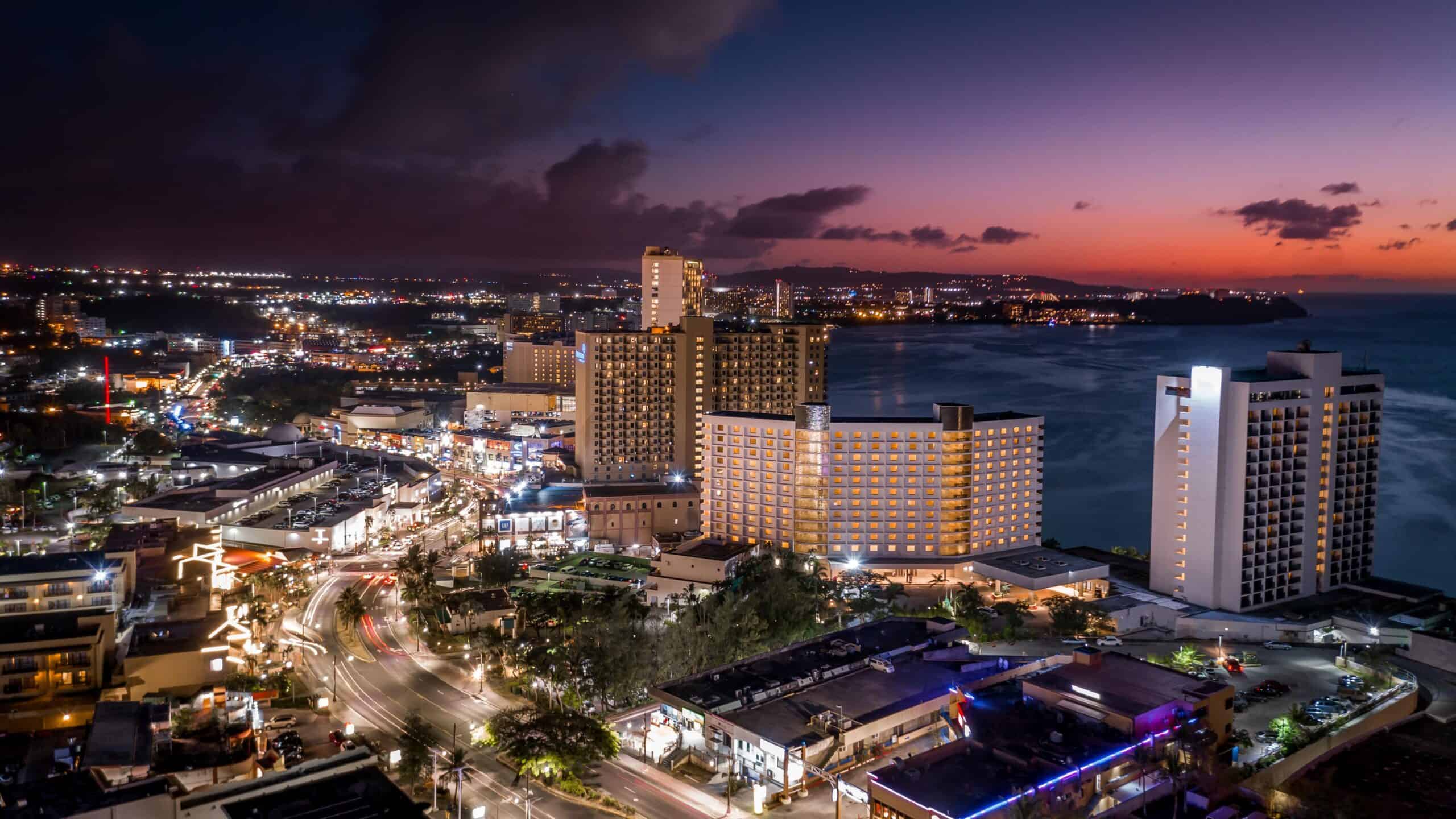
- Population density in 2022: 824 people per sq. mile
- Total population: 171,774 (178th most of 195 countries)
- Total land area: 208 sq. miles (178th largest of 195 countries)
- Population distribution: 95.1% urban; 4.9% rural
- Gross domestic product in 2021: $6.1 billion ($35,905 per capita)
- Total fertility rate in 2021: Avg. of 2.6 children per woman over lifetime
25. Japan

- Population density in 2022: 889 people per sq. mile
- Total population: 125,124,989 (11th most of 195 countries)
- Total land area: 140,734 sq. miles (61st largest of 195 countries)
- Population distribution: 92.0% urban; 8.0% rural
- Gross domestic product in 2022: $4.3 trillion ($34,017 per capita)
- Total fertility rate in 2021: Avg. of 1.3 children per woman over lifetime
24. Sri Lanka
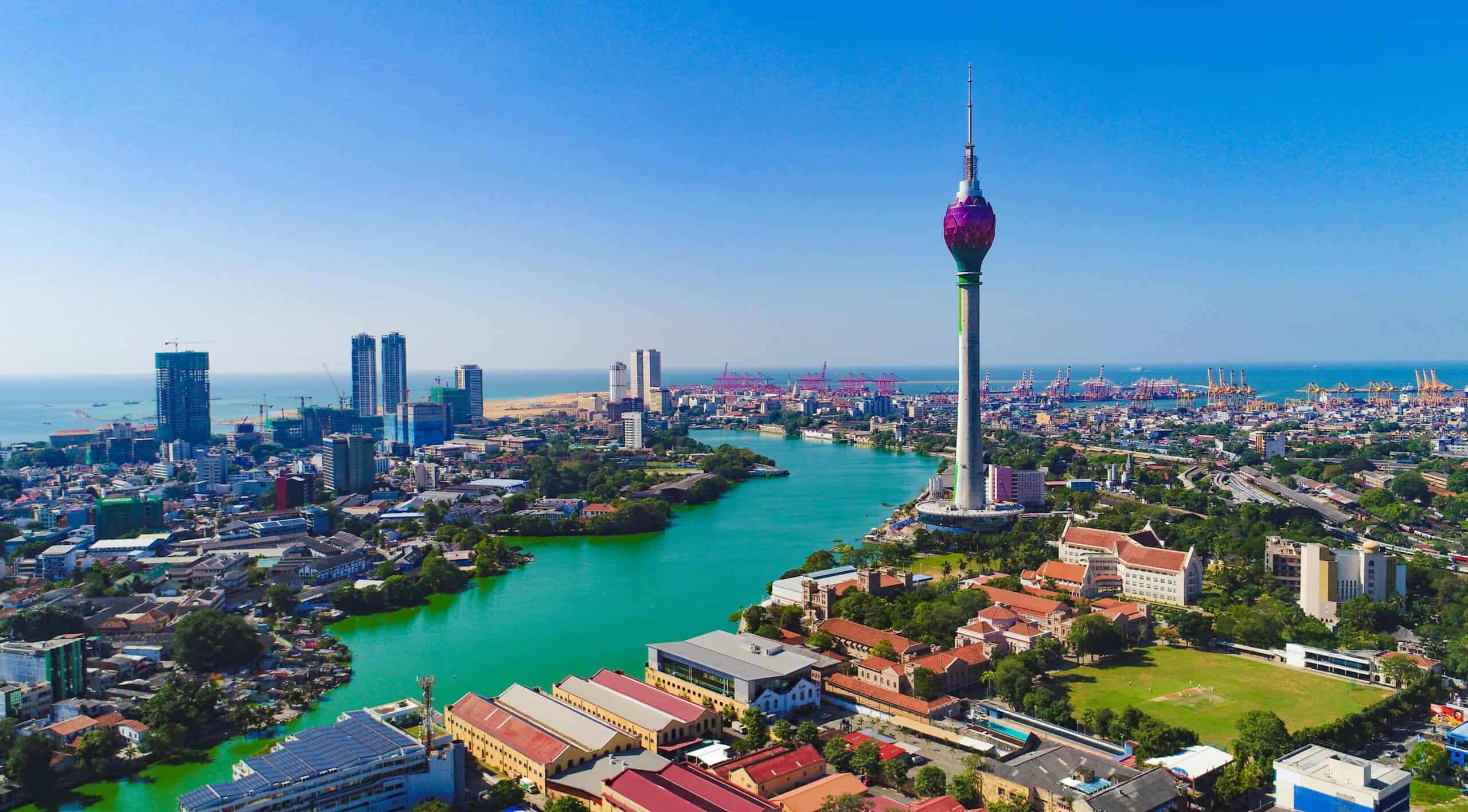
- Population density in 2022: 929 people per sq. mile
- Total population: 22,181,000 (59th most of 195 countries)
- Total land area: 23,884 sq. miles (122nd largest of 195 countries)
- Population distribution: 19.0% urban; 81.0% rural
- Gross domestic product in 2022: $74.4 billion ($3,354 per capita)
- Total fertility rate in 2021: Avg. of 2.0 children per woman over lifetime
23. Grenada
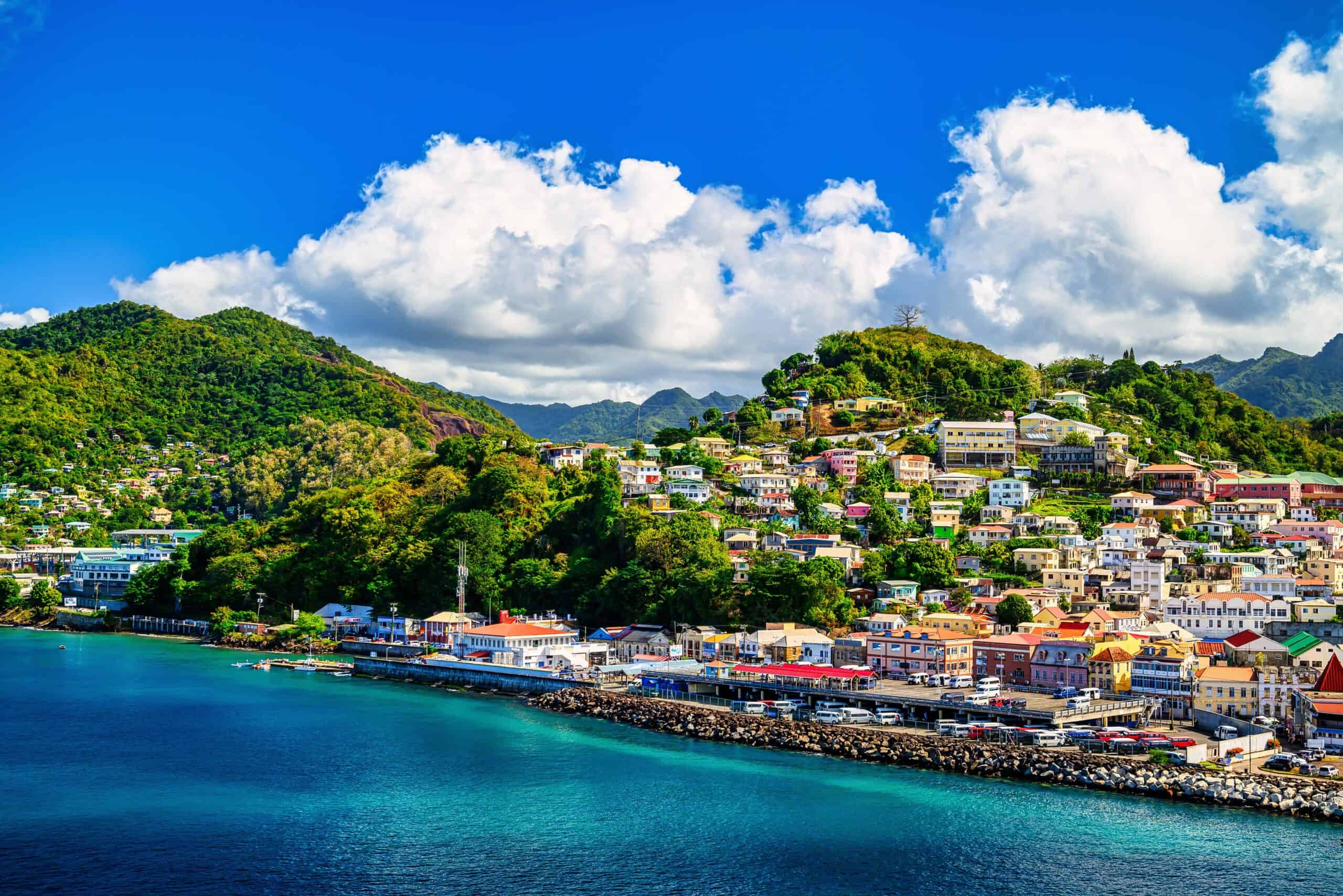
- Population density in 2022: 956 people per sq. mile
- Total population: 125,438 (180th most of 195 countries)
- Total land area: 131 sq. miles (185th largest of 195 countries)
- Population distribution: 36.9% urban; 63.1% rural
- Gross domestic product in 2022: $1.2 billion ($9,689 per capita)
- Total fertility rate in 2021: Avg. of 2.0 children per woman over lifetime
22. Tuvalu
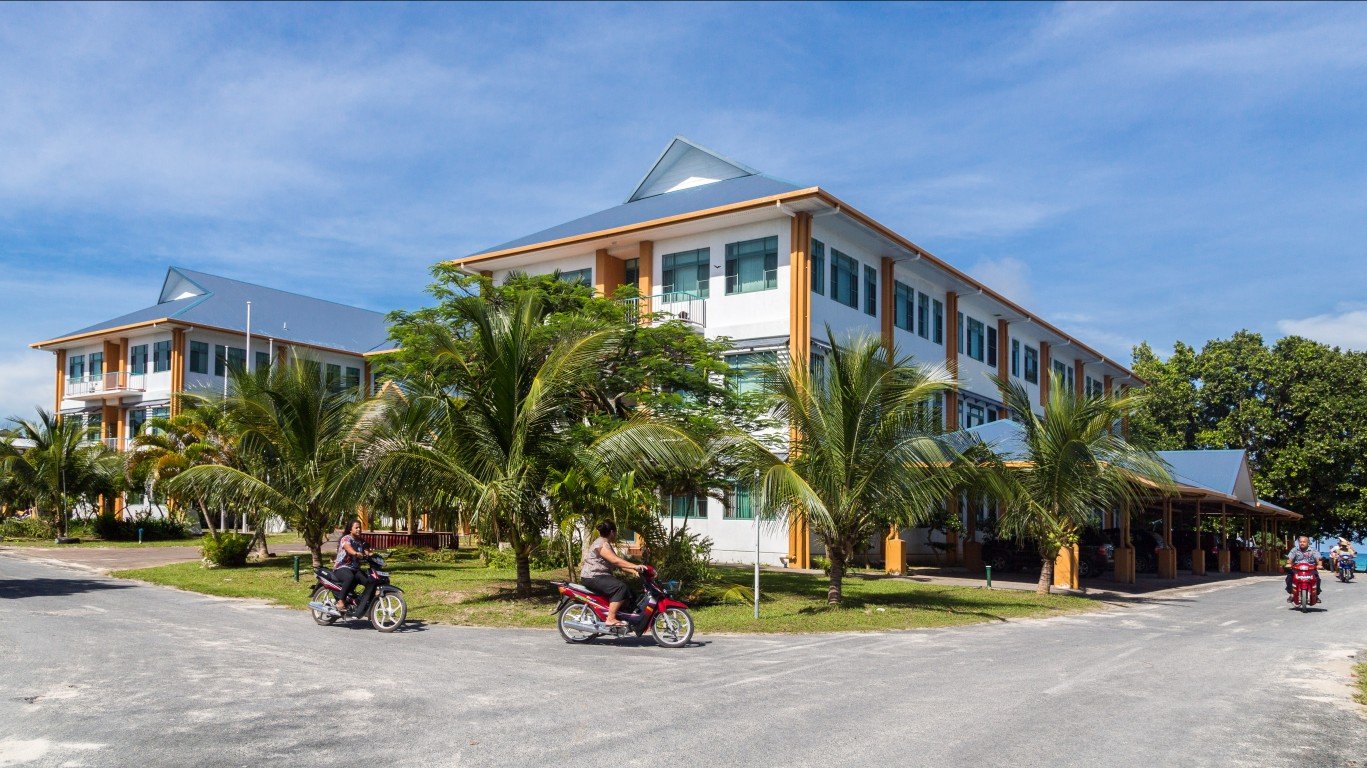
- Population density in 2022: 977 people per sq. mile
- Total population: 11,312 (the least of 195 countries)
- Total land area: 12 sq. miles (192nd largest of 195 countries)
- Population distribution: 65.5% urban; 34.5% rural
- Gross domestic product in 2022: $59.1 million ($5,222 per capita)
- Total fertility rate in 2021: Avg. of 3.2 children per woman over lifetime
21. Belgium
- Population density in 2022: 1,000 people per sq. mile
- Total population: 11,685,814 (80th most of 195 countries)
- Total land area: 11,691 sq. miles (136th largest of 195 countries)
- Population distribution: 98.2% urban; 1.8% rural
- Gross domestic product in 2022: $583.4 billion ($49,927 per capita)
- Total fertility rate in 2021: Avg. of 1.6 children per woman over lifetime
20. Philippines

- Population density in 2022: 1,004 people per sq. mile
- Total population: 115,559,009 (13th most of 195 countries)
- Total land area: 115,124 sq. miles (71st largest of 195 countries)
- Population distribution: 48.0% urban; 52.0% rural
- Gross domestic product in 2022: $404.3 billion ($3,499 per capita)
- Total fertility rate in 2021: Avg. of 2.7 children per woman over lifetime
19. Haiti
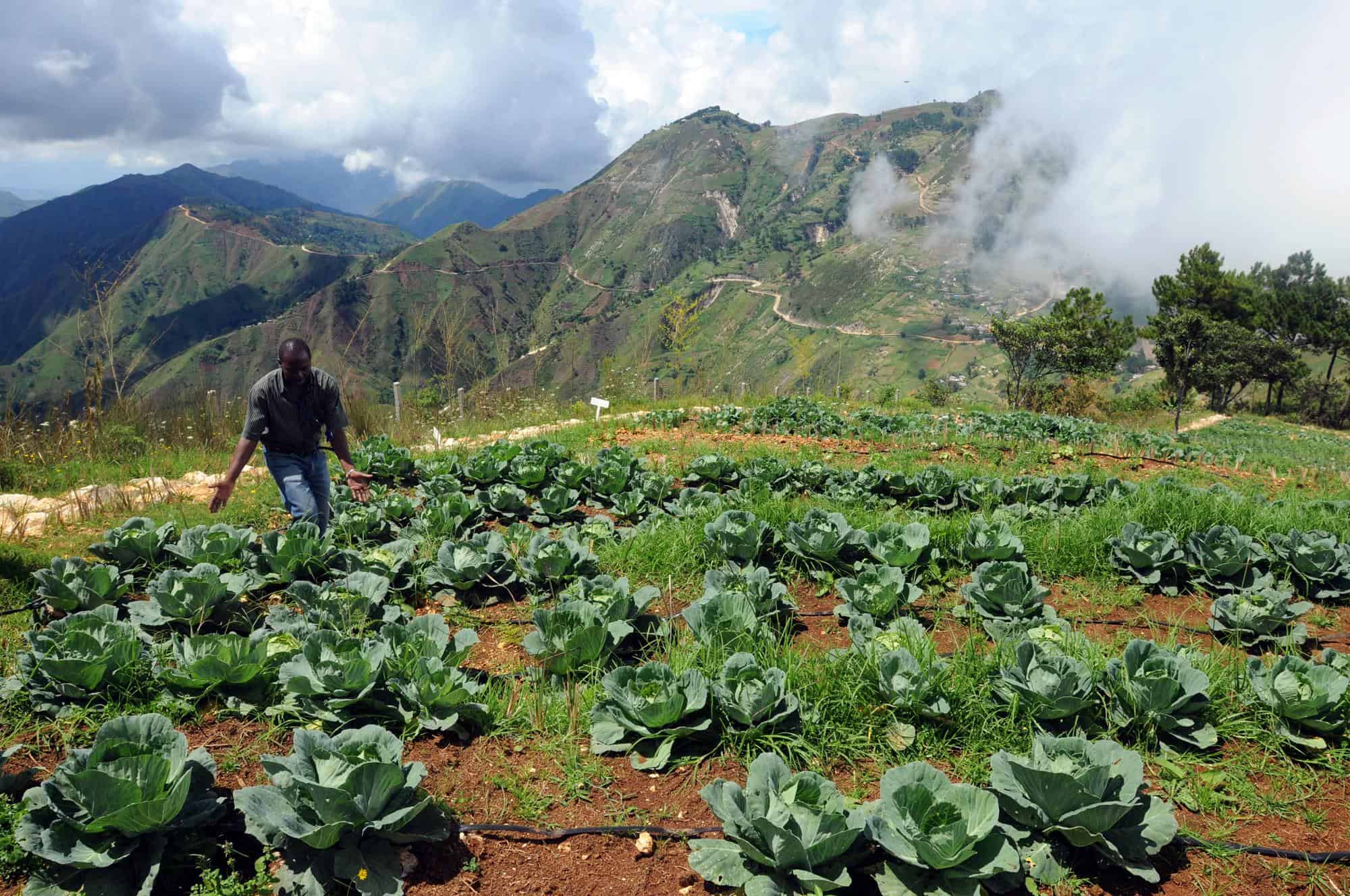
- Population density in 2022: 1,089 people per sq. mile
- Total population: 11,584,996 (81st most of 195 countries)
- Total land area: 10,641 sq. miles (141st largest of 195 countries)
- Population distribution: 58.8% urban; 41.2% rural
- Gross domestic product in 2022: $20.3 billion ($1,748 per capita)
- Total fertility rate in 2021: Avg. of 2.8 children per woman over lifetime
18. Israel
- Population density in 2022: 1,144 people per sq. mile
- Total population: 9,557,500 (95th most of 195 countries)
- Total land area: 8,355 sq. miles (148th largest of 195 countries)
- Population distribution: 92.8% urban; 7.2% rural
- Gross domestic product in 2022: $525.0 billion ($54,931 per capita)
- Total fertility rate in 2021: Avg. of 3.0 children per woman over lifetime
17. Comoros
- Population density in 2022: 1,165 people per sq. mile
- Total population: 836,774 (159th most of 195 countries)
- Total land area: 719 sq. miles (169th largest of 195 countries)
- Population distribution: 29.9% urban; 70.1% rural
- Gross domestic product in 2022: $1.2 billion ($1,485 per capita)
- Total fertility rate in 2021: Avg. of 4.0 children per woman over lifetime
16. India

- Population density in 2022: 1,235 people per sq. mile
- Total population: 1,417,173,173 (the most of 195 countries)
- Total land area: 1,147,955 sq. miles (7th largest of 195 countries)
- Population distribution: 35.9% urban; 64.1% rural
- Gross domestic product in 2022: $3.4 trillion ($2,411 per capita)
- Total fertility rate in 2021: Avg. of 2.0 children per woman over lifetime
15. Burundi

- Population density in 2022: 1,300 people per sq. mile
- Total population: 12,889,576 (77th most of 195 countries)
- Total land area: 9,915 sq. miles (143rd largest of 195 countries)
- Population distribution: 14.4% urban; 85.6% rural
- Gross domestic product in 2022: $3.3 billion ($259 per capita)
- Total fertility rate in 2021: Avg. of 5.1 children per woman over lifetime
14. Netherlands

- Population density in 2022: 1,362 people per sq. mile
- Total population: 17,700,982 (68th most of 195 countries)
- Total land area: 13,000 sq. miles (133rd largest of 195 countries)
- Population distribution: 92.9% urban; 7.1% rural
- Gross domestic product in 2022: $1.0 trillion ($57,025 per capita)
- Total fertility rate in 2021: Avg. of 1.6 children per woman over lifetime
13. Korea, Rep.
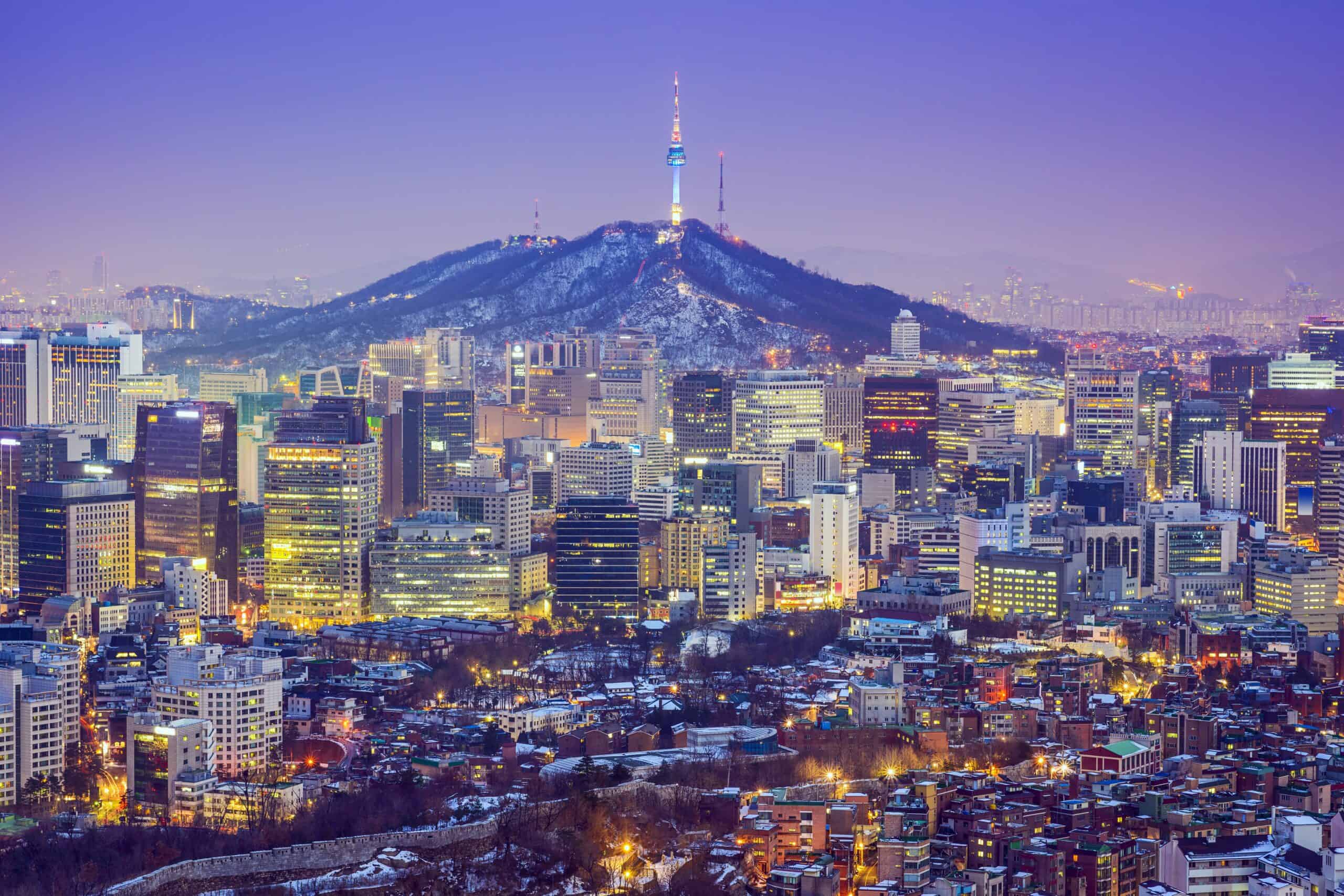
- Population density in 2022: 1,370 people per sq. mile
- Total population: 51,628,117 (29th most of 195 countries)
- Total land area: 37,684 sq. miles (105th largest of 195 countries)
- Population distribution: 81.4% urban; 18.6% rural
- Gross domestic product in 2022: $1.7 trillion ($32,423 per capita)
- Total fertility rate in 2021: Avg. of 0.8 children per woman over lifetime
12. Lebanon
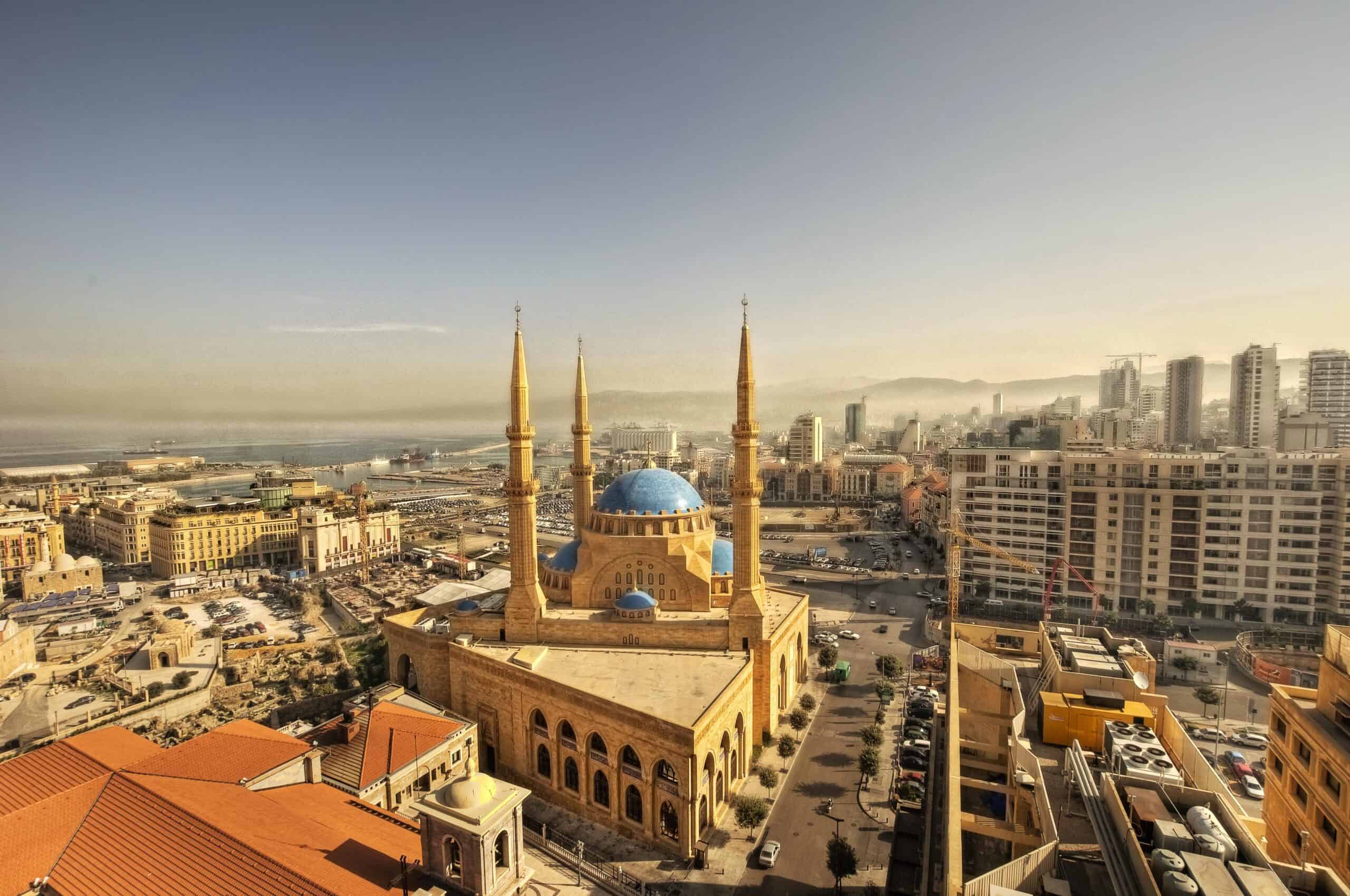
- Population density in 2022: 1,390 people per sq. mile
- Total population: 5,489,739 (116th most of 195 countries)
- Total land area: 3,950 sq. miles (159th largest of 195 countries)
- Population distribution: 89.3% urban; 10.7% rural
- Gross domestic product in 2021: $23.1 billion ($4,136 per capita)
- Total fertility rate in 2021: Avg. of 2.1 children per woman over lifetime
11. Rwanda
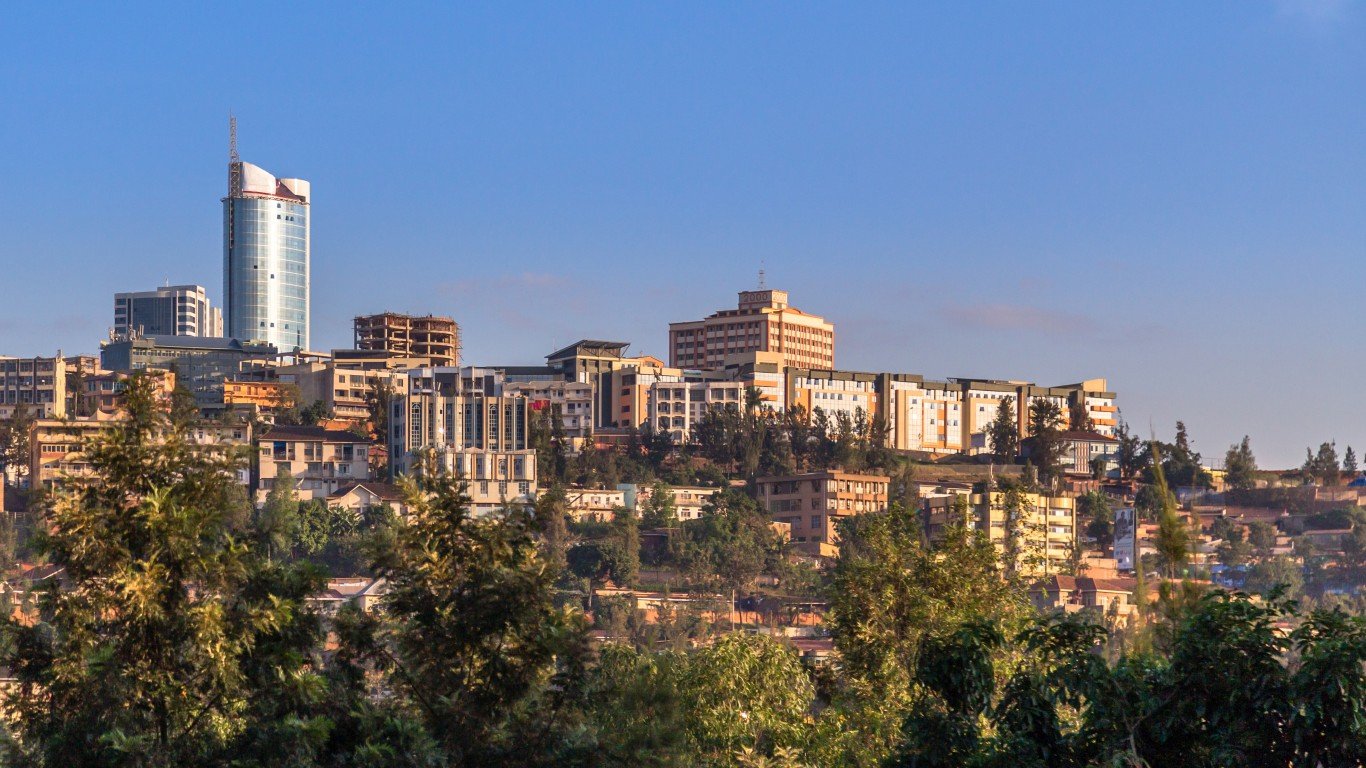
- Population density in 2022: 1,446 people per sq. mile
- Total population: 13,776,698 (75th most of 195 countries)
- Total land area: 9,525 sq. miles (145th largest of 195 countries)
- Population distribution: 17.7% urban; 82.3% rural
- Gross domestic product in 2022: $13.3 billion ($966 per capita)
- Total fertility rate in 2021: Avg. of 3.8 children per woman over lifetime
10. San Marino

- Population density in 2022: 1,453 people per sq. mile
- Total population: 33,660 (192nd most of 195 countries)
- Total land area: 23 sq. miles (191st largest of 195 countries)
- Population distribution: 97.7% urban; 2.3% rural
- Gross domestic product in 2021: $1.9 billion ($54,982 per capita)
- Total fertility rate in 2021: N/A
9. Mauritius

- Population density in 2022: 1,637 people per sq. mile
- Total population: 1,262,523 (154th most of 195 countries)
- Total land area: 771 sq. miles (168th largest of 195 countries)
- Population distribution: 40.8% urban; 59.2% rural
- Gross domestic product in 2022: $12.9 billion ($10,256 per capita)
- Total fertility rate in 2021: Avg. of 1.4 children per woman over lifetime
8. Nauru
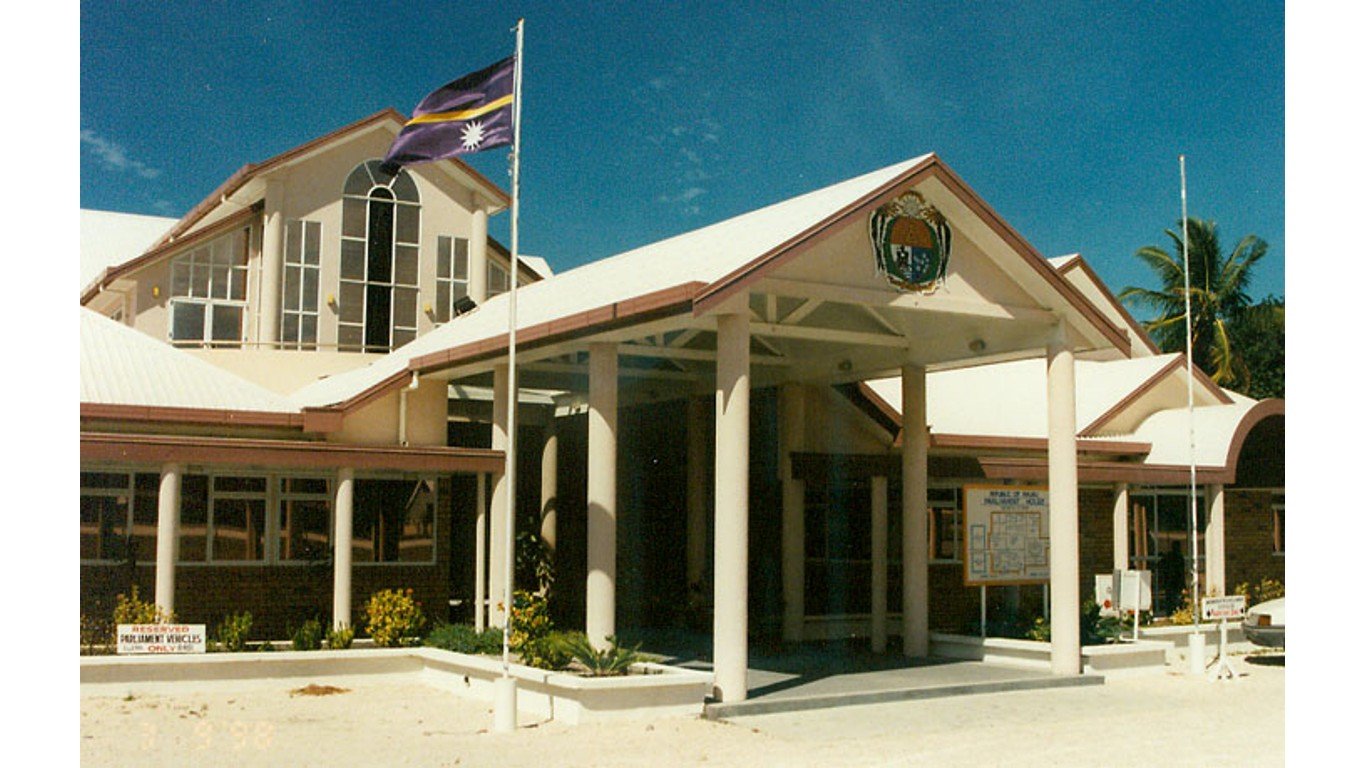
- Population density in 2022: 1,640 people per sq. mile
- Total population: 12,668 (194th most of 195 countries)
- Total land area: 8 sq. miles (193rd largest of 195 countries)
- Population distribution: 100% urban; 0% rural
- Gross domestic product in 2022: $151.6 million ($11,971 per capita)
- Total fertility rate in 2021: Avg. of 3.5 children per woman over lifetime
7. Barbados
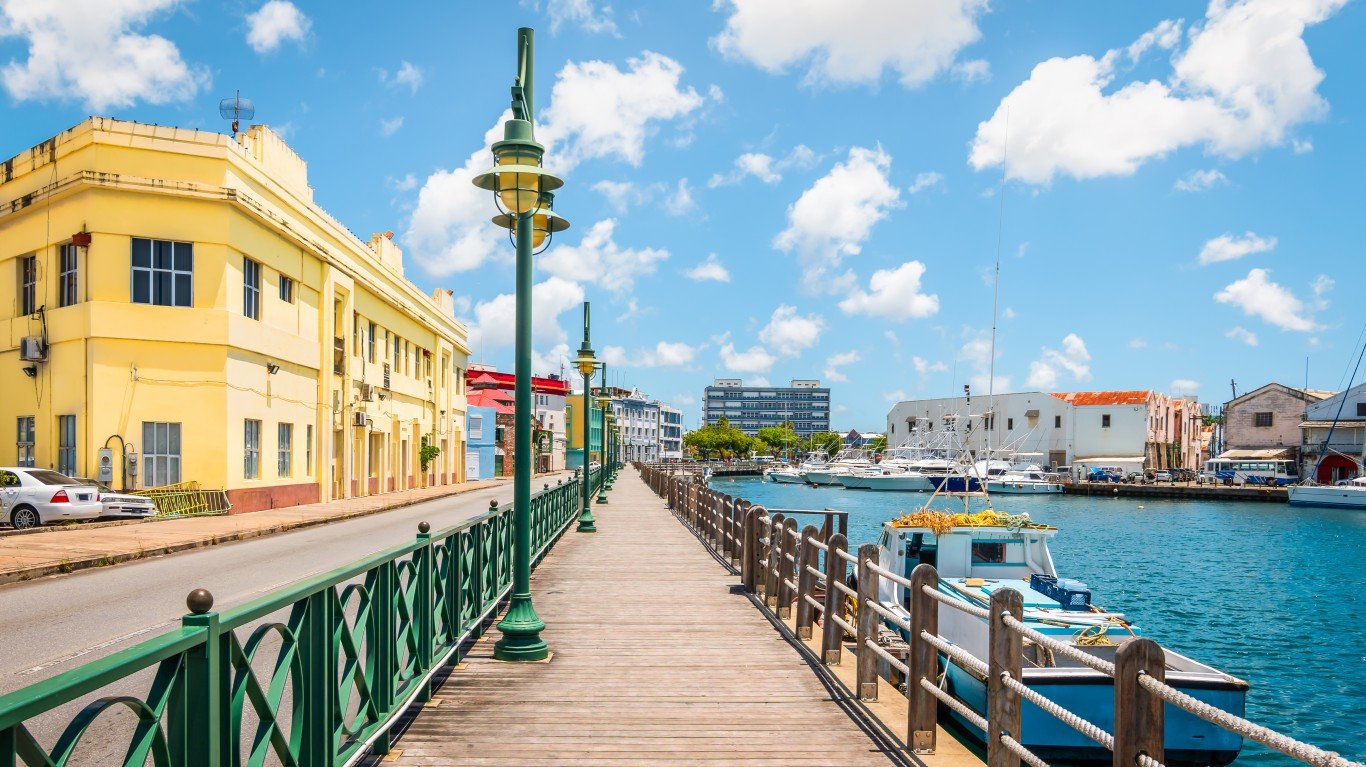
- Population density in 2022: 1,696 people per sq. mile
- Total population: 281,635 (174th most of 195 countries)
- Total land area: 166 sq. miles (183rd largest of 195 countries)
- Population distribution: 31.3% urban; 68.7% rural
- Gross domestic product in 2022: $5.7 billion ($20,239 per capita)
- Total fertility rate in 2021: Avg. of 1.6 children per woman over lifetime
6. Bangladesh
- Population density in 2022: 3,406 people per sq. mile
- Total population: 171,186,372 (8th most of 195 countries)
- Total land area: 50,259 sq. miles (94th largest of 195 countries)
- Population distribution: 39.7% urban; 60.3% rural
- Gross domestic product in 2022: $460.2 billion ($2,688 per capita)
- Total fertility rate in 2021: Avg. of 2.0 children per woman over lifetime
5. Malta

- Population density in 2022: 4,299 people per sq. mile
- Total population: 531,113 (167th most of 195 countries)
- Total land area: 124 sq. miles (186th largest of 195 countries)
- Population distribution: 94.9% urban; 5.1% rural
- Gross domestic product in 2022: $18.1 billion ($34,128 per capita)
- Total fertility rate in 2021: Avg. of 1.1 children per woman over lifetime
4. Maldives

- Population density in 2022: 4,522 people per sq. mile
- Total population: 523,787 (168th most of 195 countries)
- Total land area: 116 sq. miles (187th largest of 195 countries)
- Population distribution: 41.5% urban; 58.5% rural
- Gross domestic product in 2022: $6.2 billion ($11,781 per capita)
- Total fertility rate in 2021: Avg. of 1.7 children per woman over lifetime
3. Bahrain
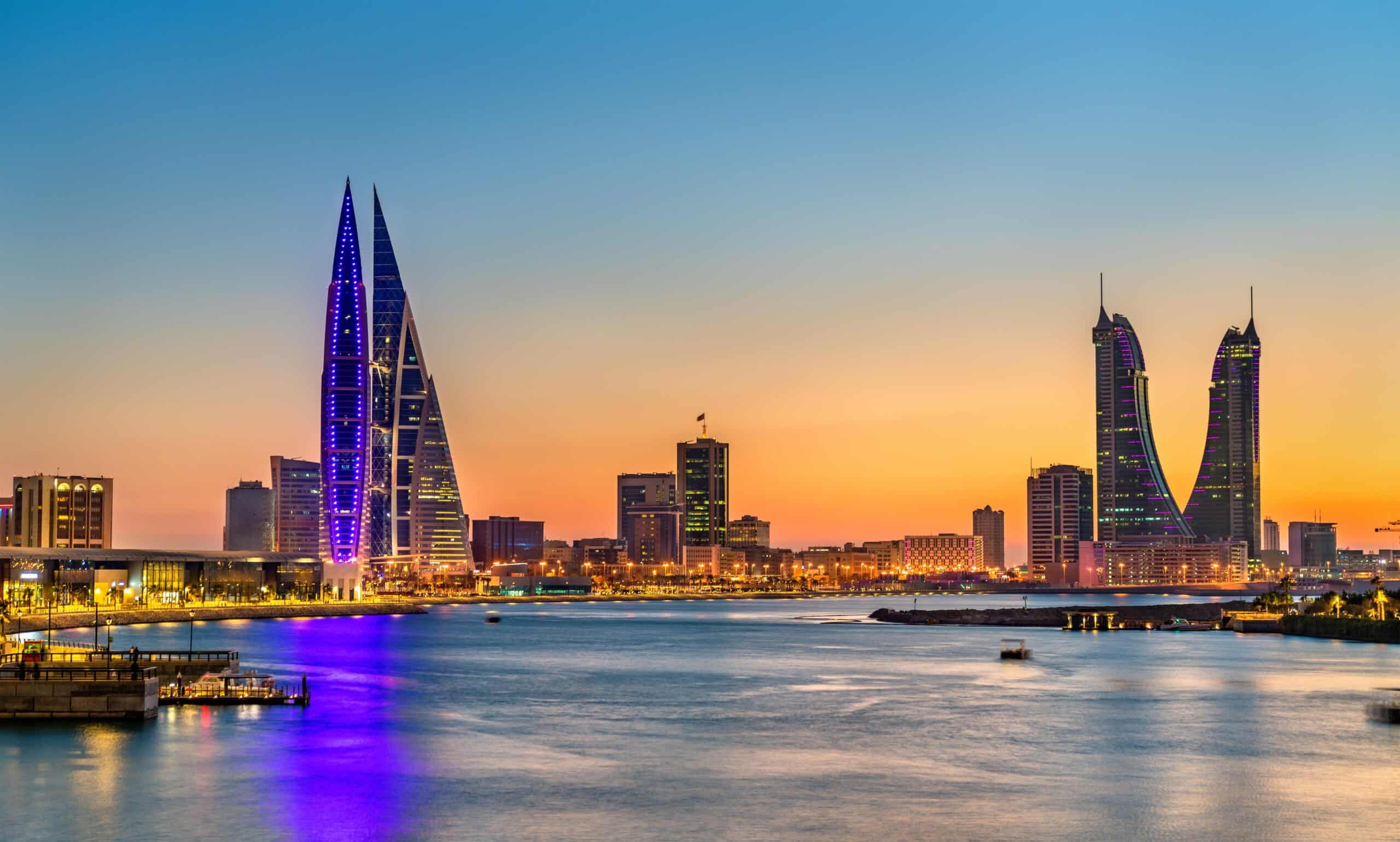
- Population density in 2022: 4,827 people per sq. mile
- Total population: 1,472,233 (151st most of 195 countries)
- Total land area: 305 sq. miles (172nd largest of 195 countries)
- Population distribution: 89.7% urban; 10.3% rural
- Gross domestic product in 2022: $44.4 billion ($30,147 per capita)
- Total fertility rate in 2021: Avg. of 1.8 children per woman over lifetime
2. Singapore
- Population density in 2022: 20,334 people per sq. mile
- Total population: 5,637,022 (113th most of 195 countries)
- Total land area: 277 sq. miles (175th largest of 195 countries)
- Population distribution: 100% urban; 0% rural
- Gross domestic product in 2022: $466.8 billion ($82,808 per capita)
- Total fertility rate in 2021: Avg. of 1.1 children per woman over lifetime
1. Monaco

- Population density in 2022: 45,324 people per sq. mile
- Total population: 36,469 (191st most of 195 countries)
- Total land area: 1 sq. mile (194th largest of 195 countries)
- Population distribution: 100% urban; 0% rural
- Gross domestic product in 2022: $8.8 billion ($240,862 per capita)
- Total fertility rate in 2021: N/A
| Rank | Country | People per sq. mi | Total population | Land area (sq. mi) | Population in urban areas (%) |
|---|---|---|---|---|---|
| 1 | Monaco | 45,324 | 36,469 | 1 | 100.0 |
| 2 | Singapore | 20,334 | 5,637,022 | 277 | 100.0 |
| 3 | Bahrain | 4,827 | 1,472,233 | 305 | 89.7 |
| 4 | Maldives | 4,522 | 523,787 | 116 | 41.5 |
| 5 | Malta | 4,299 | 531,113 | 124 | 94.9 |
| 6 | Bangladesh | 3,406 | 171,186,372 | 50,259 | 39.7 |
| 7 | Barbados | 1,696 | 281,635 | 166 | 31.3 |
| 8 | Nauru | 1,640 | 12,668 | 8 | 100.0 |
| 9 | Mauritius | 1,637 | 1,262,523 | 771 | 40.8 |
| 10 | San Marino | 1,453 | 33,660 | 23 | 97.7 |
| 11 | Rwanda | 1,446 | 13,776,698 | 9,525 | 17.7 |
| 12 | Lebanon | 1,390 | 5,489,739 | 3,950 | 89.3 |
| 13 | Korea, Rep. | 1,370 | 51,628,117 | 37,684 | 81.4 |
| 14 | Netherlands | 1,362 | 17,700,982 | 13,000 | 92.9 |
| 15 | Burundi | 1,300 | 12,889,576 | 9,915 | 14.4 |
| 16 | India | 1,235 | 1,417,173,173 | 1,147,955 | 35.9 |
| 17 | Comoros | 1,165 | 836,774 | 719 | 29.9 |
| 18 | Israel | 1,144 | 9,557,500 | 8,355 | 92.8 |
| 19 | Haiti | 1,089 | 11,584,996 | 10,641 | 58.8 |
| 20 | Philippines | 1,004 | 115,559,009 | 115,124 | 48.0 |
| 21 | Belgium | 1,000 | 11,685,814 | 11,691 | 98.2 |
| 22 | Tuvalu | 977 | 11,312 | 12 | 65.5 |
| 23 | Grenada | 956 | 125,438 | 131 | 36.9 |
| 24 | Sri Lanka | 929 | 22,181,000 | 23,884 | 19.0 |
| 25 | Japan | 889 | 125,124,989 | 140,734 | 92.0 |
| 26 | Guam | 824 | 171,774 | 208 | 95.1 |
| 27 | Viet Nam | 811 | 98,186,856 | 121,016 | 38.8 |
| 28 | Pakistan | 792 | 235,824,862 | 297,638 | 37.7 |
| 29 | El Salvador | 792 | 6,336,392 | 8,000 | 74.8 |
| 30 | Trinidad and Tobago | 773 | 1,531,044 | 1,981 | 53.3 |
ALERT: Take This Retirement Quiz Now (Sponsored)
Take the quiz below to get matched with a financial advisor today.
Each advisor has been vetted by SmartAsset and is held to a fiduciary standard to act in your best interests.
Here’s how it works:
1. Answer SmartAsset advisor match quiz
2. Review your pre-screened matches at your leisure. Check out the advisors’ profiles.
3. Speak with advisors at no cost to you. Have an introductory call on the phone or introduction in person and choose whom to work with in the future
Take the retirement quiz right here.
Thank you for reading! Have some feedback for us?
Contact the 24/7 Wall St. editorial team.

